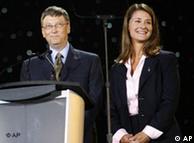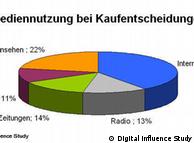We profile some of the most innovative ideas of the Social Web.
Worldwide, people sent 1.9 trillion text messages last year. That's a lot of tedious triple-tapping on mobile phones, and it's not free. Pinger, a startup in San Jose, CA, is giving us a voice version of text messaging that's Web accessible, so picking up messages need not trigger mobile-phone charges.
Pinger lets you send voice messages without calling (and interrupting) the recipient. Instead, you speak a name or phone number into your cell phone and then leave your message, which sits on Pinger's servers. A text notification lets the recipient know that a voice message can be picked up by phone or on Pinger's website. Pinger cofounder Joe Sipher, a former executive at smart-phone maker Palm, describes the service as "noninterruptive voice mail."
Sipher and cofounder Greg Woock conceived of Pinger as a quick, practical way for businesspeople to leave messages. But its biggest fans are turning out to be women between 15 and 25--a possible sign that it could become an important Web 2.0 tool. And since these eager voice messagers provide personal information upon sign-up, Pinger can make money by selling that information to companies that do targeted mobile-phone advertising. AT&T, T-Mobile, and Sprint have launched similar offerings.
Randy Komisar, a partner at Kleiner Perkins Caufield and Byers, which incubated and funded Pinger, says that because Pinger built its service with free or low-cost open-source software, it can quickly add or change features. In Komisar's view, that flexibility could allow Pinger to adjust more nimbly than larger competitors
Sharing, Privately
With Pownce, think Twitter meets Napster.
By Lissa Harris

Company: Pownce
Founding date: 2007
Funding amount: Undisclosed
You've got mail. You've also got Twitter feeds, Facebook groups, blogrolls, and instant-messaging clients. Why do you need Pownce? Launched in June 2007, Pownce joins the likes of Twitter, Jaiku, Seesmic, and Kadoink in the rapidly expanding world of microblogging. But it's really a file-sharing platform disguised as a microblogging service--and possibly the next big thing to inflict insomnia on entertainment industry lawyers.
Pownce allows users to send and receive large multimedia files, and to precisely control who receives those files and updates--something you can't do with Twitter. The file-sharing capabilities have been critical to Pownce's growth so far, says Leah Culver (see our cover), the 25-year-old who cofounded it with Digg.com cofounder Kevin Rose and Digg's creative director, Daniel Burka. "File sharing is kind of difficult online," she says. "There's not a good way to do it on IM. We did an embed feature, so you can watch videos and photos right in line, and that really took off."
Pownce has been a work in progress. Allowable file sizes were initially too small; recently they got a big upgrade, from 10 to 100 megabytes (250 for the "pro" account, for which users pay $20 a year). Users complained about the lack of a mobile-phone-friendly site; Pownce built one. Last October, the company rolled out a public API (application programming interface) enabling features such as rePownce, which publishes Pownce to your Facebook page. One thing that hasn't changed is the business model. From the start, Pownce has embedded ads in its message feeds. Culver thinks the service could give people a reason to jump on the Web 2.0 bandwagon: "We have people who say, 'This is the first social network I've ever used.'"
Cell-phone Streaming
Qik lets tourists--and reporters--broadcast live from phones.
By David Talbot

Company: Qik
Founding date: 2006
Funding amount: $4 million
Wandering the streets of Manchester, NH, during the presidential primary campaign, a self-described "citizen journalist" named Steve Garfield bumped into Duncan Hunter, a minor Republican candidate. Garfield pointed his phone's camera at Hunter for a quick interview, whereupon Hunter disclosed that he was about to tell CNN he wasn't quitting the race.
What Hunter didn't know is that Garfield's phone was armed with software from the startup Qik, allowing it to capture video and stream the interview--in real time--on Qik's website and thence to other platforms, including Garfield's Twitter network. Thus, Garfield says, he scooped CNN on this bit of election minutia.
Qik's data center not only converts cell-phone videos to Flash format but allows Web viewers to send text messages back to the person capturing the video. Bhaskar Roy, a former marketing director at Oracle who is a cofounder, says Qik's key is its adaptability--it works with phones and networks of widely differing capacities, and does so in real time. "We have been focusing on speed and live aspects, and the quality," he says. Roy says the company has recruited thousands of trial users in 55 countries.
The company is now working on business models. In one, it would sell ads to Web video consumers who text-message replies; in another, it would take a cut from sales of high-end cell phones that capture the best videos (which would come Qik-equipped). Garfield is happy to pay: "Viewers can type in a window while watching, and affect the coverage. That's, like, totally amazing and groundbreaking!"
Traffic Master
A dashboard gadget brings the Internet to highways, for traffic and local search.
By David Talbot

Company: Dash Navigation
Founding date: 2003
Funding amount: $71 million
This spring, after years of development, Dash Navigation finally released Dash Express, a two-way Internet-connected dashboard traffic gadget that brings a kind of social network to the highways. At its heart, the device is a traffic reporter; the company draws on existing traffic data and turns users' cars into networked sensors that broadcast their speed and location (based on GPS data) to other Dash-equipped cars, warning of tie-ups and suggesting routes. Because Dash cars provide data from all roads, not just highways that may already have sensors, they fill in blank spots. In addition, the gadget is a search tool that taps the Web for any number of purposes, including location-based search for, say, Thai food, cheap gas, movies, or apartment rentals. Because it has an open programming interface, new search applications will keep popping up, says Robert Currie, Dash's president. Dash makes money on sales and subscriptions.
Crisis Sourcing
Ushahidi's platform allows text messages to feed into the Web.
By David Talbot

Company: Ushahidi
Founding date: 2008
Funding amount: Undisclosed
In the chaos that followed Kenya's disputed presidential election last December, 1,200 people were killed, and several hundred thousand more fled their homes. Skeptical of the accuracy of official reports, a group of Web developers and bloggers with Kenyan ties cobbled together a Web application that could receive citizen incident reports via text message from any mobile phone in Kenya and display them as a Google Maps application.
Cofounded by Erik Hersman, an American son of missionary parents who was raised in Kenya (he is author of the blog Whiteafrican.com and now lives in Florida), the group called the creation Ushahidi--the Swahili word for "testimony." They have formed a nonprofit company and are finalizing funding with a large foundation to turn Ushahidi into a platform that can be deployed easily and rapidly in areas of crisis. Already, a version of Ushahidi is being used to track anti-immigrant violence afflicting South Africa.
"While there have been a lot of projects to do citizen reports, they are all Web-based," says Ethan Zuckerman, a research fellow at Harvard's Berkman Center for Internet and Society and founder of Geekcorps, a technology volunteering agency. "There is no strong content management system designed to take content off of SMS [text messaging]. It's pretty sophisticated."
Now anyone with a mobile phone can become a node on the network. "Whenever a crisis breaks out and you want distributed data gathering and visualization, our goal is to make it a lot easier to do," says Hersman. The technology won't require much expertise; "people can either download Ushahidi or we will host it for you." And it's not just for Africa. He says the technology could help chronicle fast-moving U.S. calamities such as Hurricane Katrina.
Partial Recall
QTech's reQall makes custom reminders for scatterbrains.
By Lissa Harris

Company: QTech
Founding date: 2004
Funding amount: $5 million
Sunil Vemuri, cofounder of QTech, observes that "one of the dark secrets of memory aids is that people forget to use their memory aids." The company hopes to solve this problem with a Web-based tool called reQall, which grew out of Vemuri's doctoral research at MIT. Users enter calendar items, grocery lists, brilliant ideas, and other snippets of information into the system; they can do this as text over the Web or via a toll-free phone number. Then reQall uses a combination of speech recognition software, human transcriptionists, and proprietary algorithms to generate reminders by phone, text message, RSS feed, or e‑mail, or through a Web interface (the details are customized to the user). "Our main competition is the Post-it note," Vemuri says.
QTech's advisors include leading figures in digitally assisted memory, including
Microsoft's Gordon Bell. Former MIT Media Lab head Walter Bender, Vemuri's PhD advisor, says reQall "helps reduce the instances of forgetting in the first place." But QTech initially forgot to make money from the business. It's now exploring partnerships with cell-phone companies, fee-based "premium" accounts, and advertising models.
Are You ... Influential?
33Across calculates your online social clout for sharper ad targeting--and for you.
By Larry Aragon
Company: 33Across
Founding date: 2007
Funding amount: $1 million
When it comes to social networking, "there are an incredible number of people who want to be known as influential," says Eric Wheeler, CEO of the New York City startup 33Across. Of course, there are also plenty of people--advertisers, namely--who want to know who the influential people are. Wheeler would cater to both. A number of companies try to help target ads based on users' behavior; a visitor to Cars.com, for example, might see Ford ads. In June, 33Across announced its first partnership with a social-networking site--Meebo--to build anonymous profiles of users' actual influence.
The profiles are drawn from the usual sources--self-provided information and Web browsing history--as well as from details on users' networks and their propensity to communicate. The goal: to find gossipy influencers who will be the "viral promoters" of, say, a new product, says Christine Herron of First Round Capital, an investor. "All this data can be used to understand an incredible amount of detail about a person's influence," she says.
Mainly, "it allows advertisers to be much smarter in how they deliver a message," says Wheeler, formerly CEO of ad agency Neo@Ogilvy North America. In exchange for giving 33Across nonprivate user data, social-networking sites get a piece of the resulting ad revenue. Users could benefit, too, since the social-networking site could share the data with them. Measures of influence might be important to bloggers, among others. 33Across plans a full launch in September.
Semantic Ads
Peer39's algorithms promise better ways of mining language.
By Lissa Harris

Company: Peer39
Founding date: 2006
Funding amount: $11 million
The semantic web is coming. That means that software will comb blogs, social networks, and forums for information about the meaning of a page, reading it ever-more intelligently--and, of course, better targeting advertisements.
This last bit is where Peer39, a semantic-advertising company founded by entrepreneur Amiad Solomon, comes in. Peer39's investors are betting that the company's algorithms--built on research at the Technion Institute of Technology and Princeton's Institute for Advanced Study--will improve on existing methods. "These guys find organic expressions of demand on the Web, on blogs, on forums and chats--all kinds of specific areas where people are talking about products," says Jon Medved, an angel investor in the company. Then they instantly deliver custom advertising. "It's a more compelling user experience," Medved says.
Mashups Made Easy
ByLissa Harris

Company: Mashery
Founding date: 2006
Funding amount: Less than $5 million
Websites once stood alone. Now they talk to each other, exchanging bits of data and piggybacking on each other's communities. One key to this change was the development of application programming interfaces (APIs), which allow all sorts of information sharing and hybridization. But startups often have trouble managing their APIs effectively. Mashery, a San Francisco startup, makes it easier--providing security, keeping abreast of shifting industry standards, and introducing potential partners to each other. This spring, Mashery helped Reuters launch its Open Calais project, a public API that gives developers access to semantically tagged news content, says Oren Michels, Mashery's CEO.
Video Packet-Switching
Anagran helps the Internet handle growth in streaming media.
By Larry Aragon

Company: Anagran
Founding date: 2004
Funding amount: $40 million
As a Pentagon researcher in the 1960s, Lawrence Roberts led development of what became the Internet. But breaking information into packets that could take numerous redundant network paths "wasn't designed for streaming media," Roberts says. Network routers treat packets equally and can delay or drop them; this means blips and dead spots in voice and video.
Roberts' s company, Anagran, promises a fix. Its technology, which prescreens data before it enters a router, can tell that certain packets belong to streaming media and give them priority. (Or it can lower their priority, if the goal is to limit file sharing.) Anagran's approach is different from that taken by Roberts's previous company, Caspian Networks, which shut down in 2006 after consuming more than $300 million in venture capital. Caspian made a large, expensive router that required costly network redesigns. Anagran's device, by contrast, plugs into existing routers to handle up to four million simultaneous data or media streams.
Last year, Anagran started shipping products to government and university customers seeking to ensure that peer-to-peer file sharing doesn't overwhelm their networks. (The technology is better at identifying peer-to-peer traffic than an existing technology called deep packet inspection, which can miss encrypted files, Anagran says.) Warren Packard, who invested in Anagran for Draper Fisher Jurvetson, says the technology will be critical to future Internet growth, "especially when you consider its impact on real-time streams that require high quality of service."
 “Sustainability” is a meme morphing into a buzzword. As “climate crisis,” “triple bottom line,” “carbon cap and trade,” “cleantech,” and other phrases enter more widespread use, they are amalgamating, becoming code words that signify that the user “gets it,” while offering little specificity about what it is that’s gotten.
“Sustainability” is a meme morphing into a buzzword. As “climate crisis,” “triple bottom line,” “carbon cap and trade,” “cleantech,” and other phrases enter more widespread use, they are amalgamating, becoming code words that signify that the user “gets it,” while offering little specificity about what it is that’s gotten.















 Star Wars: Episode IV according to a three-year-old.
Star Wars: Episode IV according to a three-year-old.













